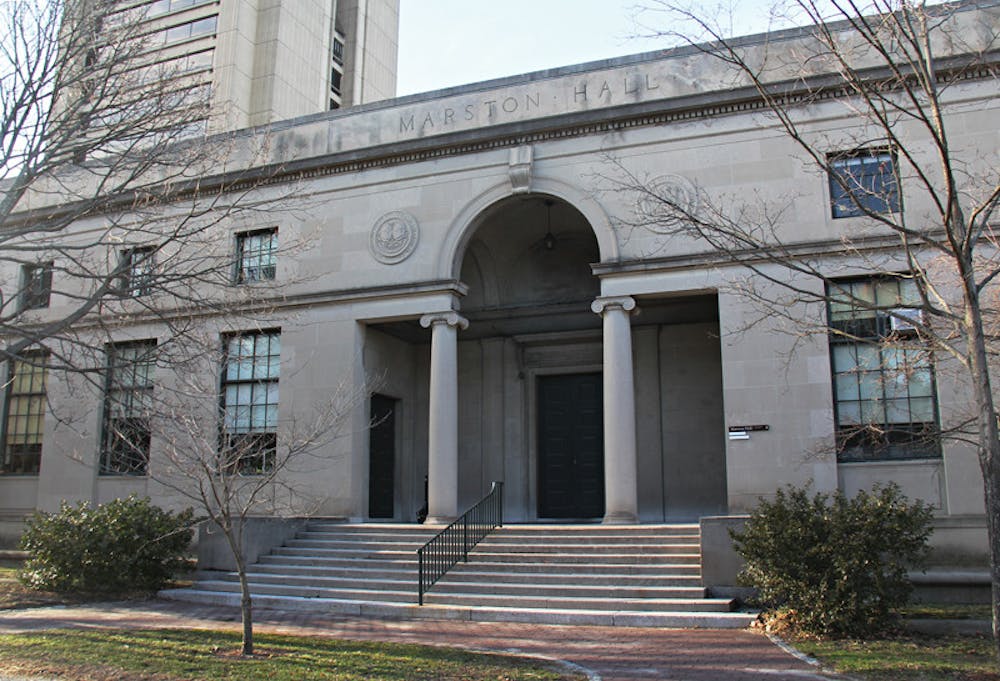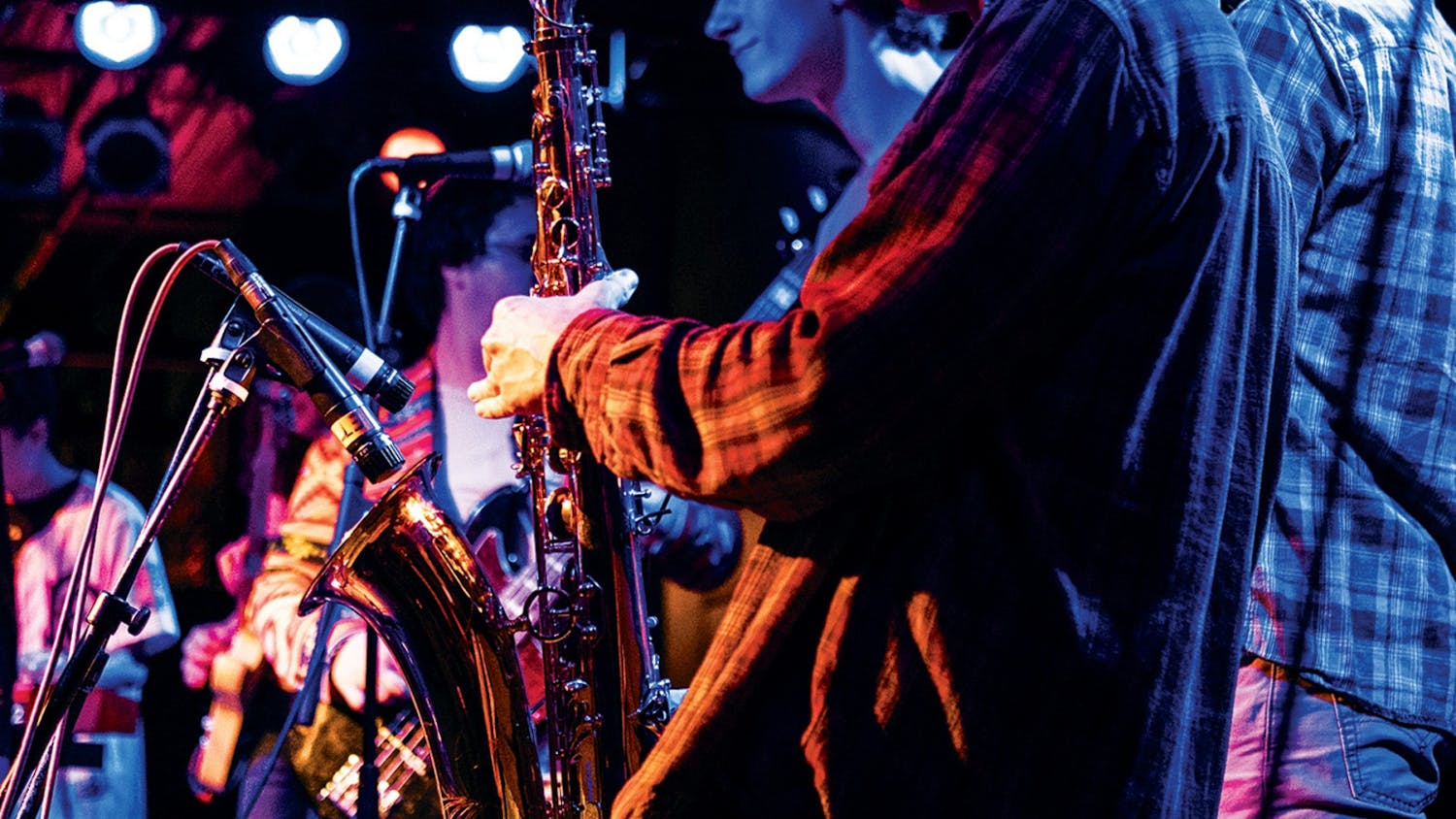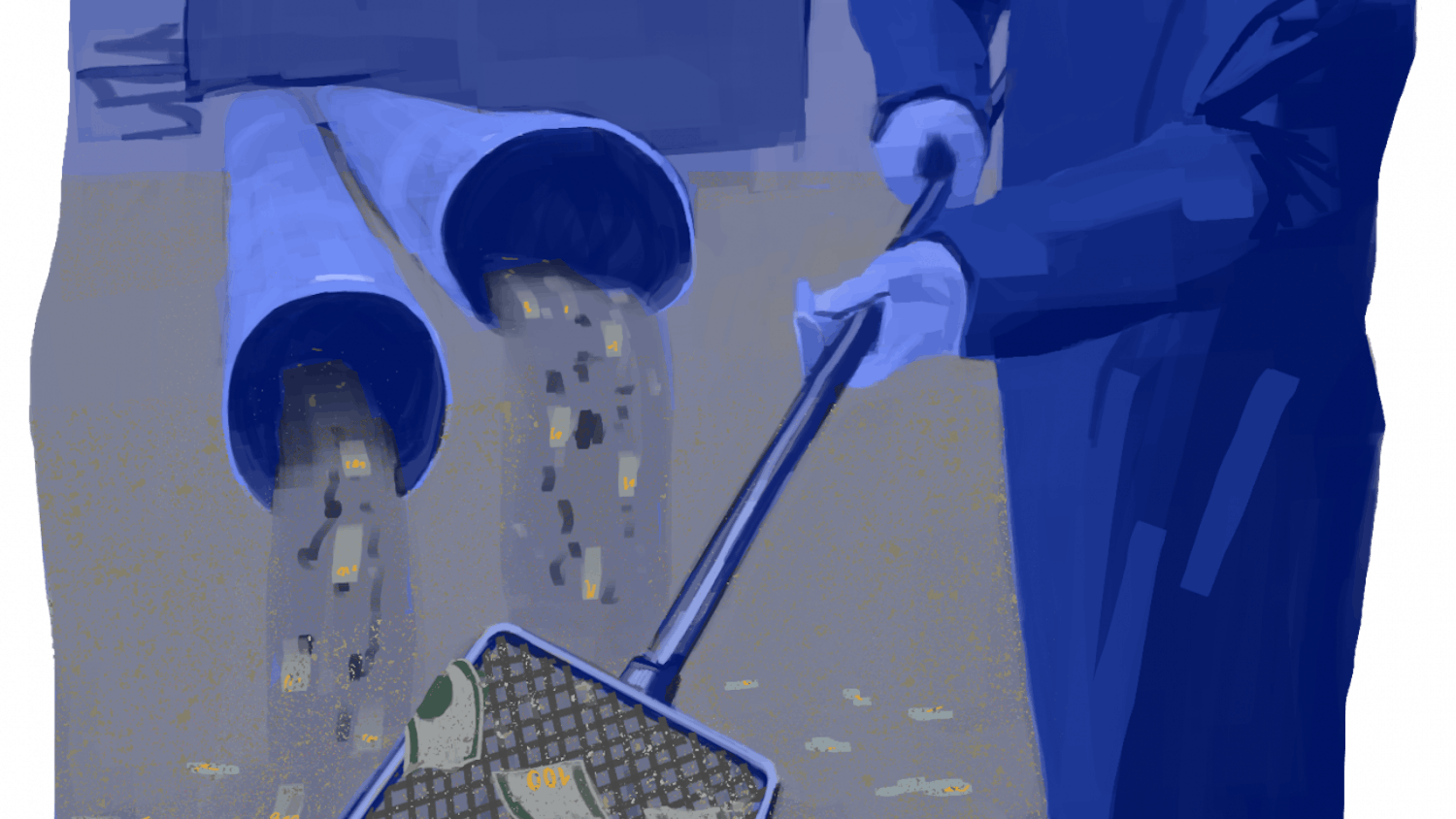One in an occasional series of articles spotlighting the architectural and social history of spaces at Brown.
Amid Brown’s hub of brick and concrete science buildings lies an odd gem. Marston Hall, the current home to the departments of comparative literature and Slavic languages, sits in the center of Sciences Park as a throwback to an earlier time.
Commissioned in 1918 and dedicated in 1926, what was at the time the “Marston Hall of Modern Languages” was gifted to the University by Edgar Lewis Marston, a member of Brown’s Board of Fellows, and sits on land acquired by the University in 1854. Marston donated $150,000, and the additional $64,000 used in construction came from “gifts of other friends of the University,” according to Encyclopedia Brunoniana. The cost of the building came to $214,000.
At its inception, the building housed the departments of French, German, Hispanic and Italian studies, which have all relocated since they “outgrew the nexus of shared space,” said Robert Emlen, senior lecturer of American studies.
Built of Indiana limestone, the white hall’s entrance is visually striking. The two-floor foyer is naturally lit by a stained-glass cupola overhead and is anchored by a central fireplace. Four arched wooden alcoves surround the space, and a grand table fills out its center.
This is one of only four “‘rotunda’ spaces at Brown,” according to a 2006 preservation report by R.M. Kliment and Frances Halsband Architects. The others are in Robinson Hall, University Hall and the Cabinet Building, home to the University’s Population Studies and Training Center.
Marston was designed by William Welles Bosworth, the architect of the Morgan Library and Museum in New York City and a “close acquaintance” of John D. Rockefeller Jr. 1897, according to Brown Facades, a mobile app created by students and faculty members that was released last year. On the outside of the building, the University’s original seal engraves the walls of the upper-left entryway. Brown’s current seal sits on the entrance’s right side.
Today, complete with creaky wooden doors, the Slavic languages department library and original — but out-of-commission — water fountains, Marston still has its original 1920s grandeur. “Marston Hall is a child of the 1892 Columbian Exposition and the so-called classically inspired American Renaissance,” which “could easily be mistaken for a small fine arts museum,” according to Raymond Rhinehart’s ’62 “Brown University: The Campus Guide.”
The building’s completion was delayed because it required extensive fundraising efforts. In President William Faunce’s 1919 report to the Corporation, he wrote that the construction of the new “home for modern languages has been delayed both by the abnormal cost of building operations and by the uncertainty regarding location.”
In the early 1920s, what is now Sciences Park was a residential area, giving Marston Hall “distinction,” according to Rhinehart’s book. The space is situated on Manning Street, which was still a working road at the time, lending “a real urban presence” to the building. The entire block was absorbed by the University and converted to Manning Walk at some point between the late 1970s and early 1980s, Emlen said, adding that it was a “big deal” to build east of Thayer Street at the time.
The French, German, Hispanic and Italian studies departments moved out and into their own buildings — French and Hispanic studies housed in the Rochambeau House and Italian and German at 190 Hope St. Not only have the Slavic languages and comparative literature departments occupied Marston, but part of the Department of Chemistry has also moved in. Slavic languages occupies the western side of the building, comparative literature lies on the eastern side and chemistry occupies the basement.
The current architecture of Sciences Park — characterized by the brutalist-style Sciences Library and the “fortress”-like Center for Information Technology — wasn’t conceived until nearly 60 years later, in 1971 and 1988, respectively, according to Rhinehart’s book. But many years before these campus mainstays were completed, Faunce believed different types of spaces should house the humanities and the sciences.
“The study of languages and literature has never been equipped as has the study of science,” he said in 1919, according to the preservation report. He went on to compare the nature of humanities and sciences studies, concluding that providing appropriate atmospheres for studies of the modern languages “is so simple that it is strange indeed we have not provided it long ago.”

ADVERTISEMENT




